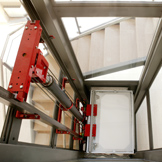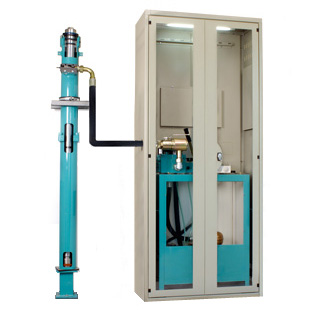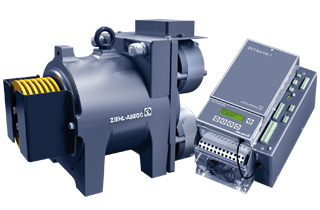MOTOR TYPES

Oil-hydraulic or Gearless?
There are two types of lifts: oil-hydraulic (or hydraulic) and gearless.
With recognized professionalism Rerman has been installing the aforementioned types in countless variations for years. On this page we seek to briefly present the singularities of each family of lifts.
With recognized professionalism Rerman has been installing the aforementioned types in countless variations for years. On this page we seek to briefly present the singularities of each family of lifts.
Oil-dynamic motor operation
"Oil-hydraulic" means a lift whose movement is produced by a hydraulic junction box which provides energy to a fluid (oil with additives) supplied with three-phase electricity, thanks to which a piston is operated which comes out of a cylinder. The attached electric motor operates during the ascending phase of the cab moves simply by the force of gravity in descent.
The hydraulic junction box must be inside an exclusive location, called a machine room, which must have a series of precise characteristics: a metallic door which opens outwardly, equipped with locks that can be manually opened from inside of the room itself, a suitable surface area (variable according to the size of the lift) with a minimum height of 2000mm, a hoisting hook vertically positioned to the junction box, ventilation according to the characteristics of the building in which it is located.
It is currently possible to substitute the machine room with metallic closets of small size (900x400x2100h mm) and whose location must be carefully planned to guarantee the same safety as a machine room.
The hoistway is the vertical space inside of which the lift passes and must be made to sustain the strain of the elevator and meet the building's fire prevention requirements. The walls must be made with fireproof materials, smooth and painted white. Outward ventilation must always be guaranteed and may vary according the building type.
The hydraulic junction box must be inside an exclusive location, called a machine room, which must have a series of precise characteristics: a metallic door which opens outwardly, equipped with locks that can be manually opened from inside of the room itself, a suitable surface area (variable according to the size of the lift) with a minimum height of 2000mm, a hoisting hook vertically positioned to the junction box, ventilation according to the characteristics of the building in which it is located.
It is currently possible to substitute the machine room with metallic closets of small size (900x400x2100h mm) and whose location must be carefully planned to guarantee the same safety as a machine room.
The hoistway is the vertical space inside of which the lift passes and must be made to sustain the strain of the elevator and meet the building's fire prevention requirements. The walls must be made with fireproof materials, smooth and painted white. Outward ventilation must always be guaranteed and may vary according the building type.
Oil-dynamic advantages
- low purchase price;
- production of lifts for any load;
- ease of construction.

Electric motor functioning
A "gearless" lift is one whose movement is done by the hoisting machinery (gearless or winch) which transmits the movement of the cables which hold the cab; gearless lifts operate in both the ascent phase and the descent.
Originally these systems had the hoisting machinery located inside the machine room, while currently it can be located inside the hoistway (a solution that is called Machine Room-Less) with notable space savings.
In fact, even the control board is located inside the hoistway in that solution, so that a machine room no longer needs to be built, or, in the case of existing buildings, the space can be recovered for different use.
Even in that case, the hoistway must be made in such a way to handle the strain of the lift and meet the building's fire prevention requirements. The walls must be made with fireproof materials, smooth and painted white. Outward ventilation must always be guaranteed and may vary according the building type.
Originally these systems had the hoisting machinery located inside the machine room, while currently it can be located inside the hoistway (a solution that is called Machine Room-Less) with notable space savings.
In fact, even the control board is located inside the hoistway in that solution, so that a machine room no longer needs to be built, or, in the case of existing buildings, the space can be recovered for different use.
Even in that case, the hoistway must be made in such a way to handle the strain of the lift and meet the building's fire prevention requirements. The walls must be made with fireproof materials, smooth and painted white. Outward ventilation must always be guaranteed and may vary according the building type.
Gearless lift advantages
- low energy consumption;
- more environmentally friendly due to the absence of hydraulic oil and batteries which later must be disposed of with relative costs;
- beyond comparison performance like movement speed and the braking perfection at the landing;
- superior level comfort in movement;
- capacity to overcome any height;
- space saving due to absence of machine room.


